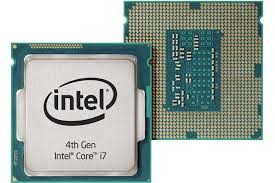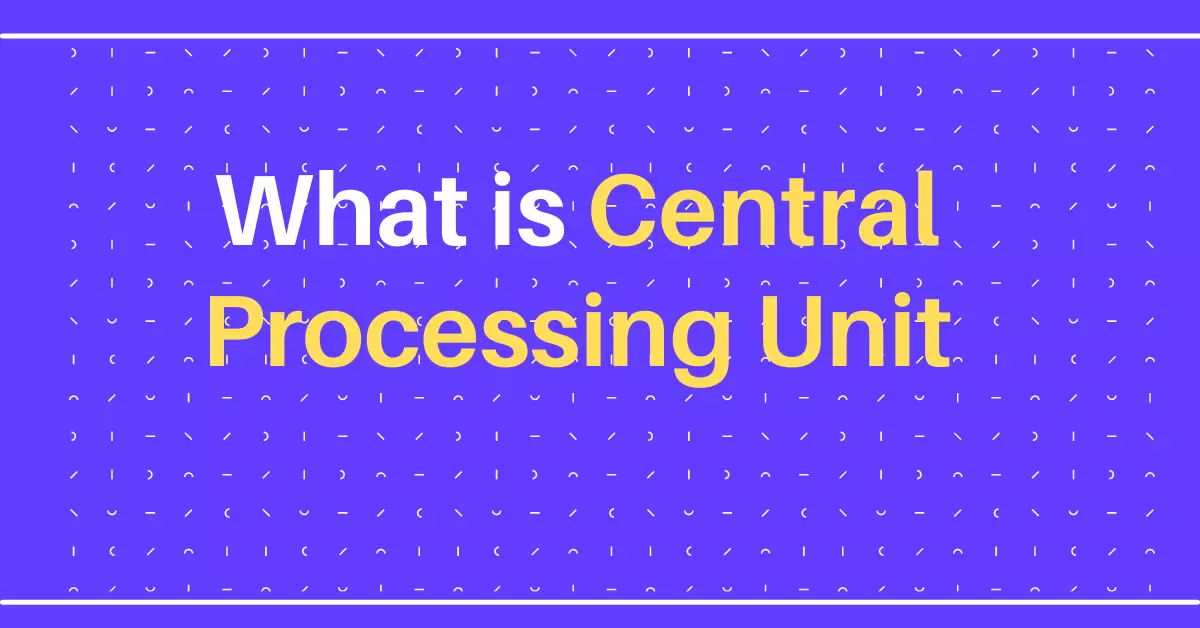What is a CPU in Computer System?:: The CPU stands for Central Processing Unit and is additionally called a Microprocessor or Microchip.
Now the CPU or microprocessor is the essential and fundamental part of the computer system, where all the arithmetic and logical calculation takes place.
It interprets, translates, and carries out the instructions for operating a computer as a device.
In other words, the set of instructions or data is introduced to the PC system in the form of raw data through input devices of computer, and later this instruction is processed or prepared to get desired or wanted results.

Now as we talk or discuss CPUs or Microprocessors we tend to talk about their speed, accuracy, and reliability, as significant computer technology develops the speed of CPUs has changed dramatically.
Most processors nowadays are multicore processors.
A multi-core processor is a single chip with at least two or more separate processor core, or layers which has the circuitry to process instructions and directions.
Every PC contains no less than one processor yet you can see many computers with multiple processors, this processor executes each instruction and direction separately.
The processor or CPU is installed on the motherboard or mainboard they are typically square-shaped with more than 250 pins on the base surface of the chip, the processor is connected or associated with the motherboard by a Zero insertion force (ZIF).
To avoid overheating heat sink and a CPU fan is installed on the processors.
Common multi core processor are
- Dual-Core Processor is a processor which contains two separate cores of processors
- A Triple-core processor contains three separate cores of processors
- The Quad-Core processor contains four separate cores of processors
- The CPU is also considered the brain of the computer
- Famous manufacturers of the processor are Intel and AMD
Related Articles
- What is Computer Fundamentals
- Advantages and Disadvantages of Computer
- Basic Block Diagram of Computer
- What are the Characteristics of Computer
- Classifications of Computer
- Classification of Computer According to Purpose, Size, Types, and Uses
Components of CPU [Central Processing Unit ]
The main or fundamental components of CPUs are the Arithmetic logic unit, Control unit, and Cache Memory.
1. Arithmetic and Logic Unit.
ALU performs all the arithmetic and logic calculations provided to computer systems are addition, subtraction, multiplication, division, comparison, greater, and less.
2. Control Unit.
This unit controls and facilitates all the activities and operations performed in the PC system.
It gets programs from the main memory of the computer system to interpret or translate them and control other units to get the desired result.
3. Cache.
Cache memory dwells between the main memory and the processor.
The rate of exchanging data and information is substantially higher compared to other memory of computer systems.
The cache memory saves and holds the data or set of information that is about to process immediately by the system.
The cache memory is not available to users they cannot delete, update, or refresh the programs inside the memory, the manufacturer, or computer programmers can erase or update the data which is stored inside the cache memory.
They are quite expensive therefore they were first introduced or installed in large computers only in small numbers.
However, as technology developed small computers or desktop computers used cache memory and we usually call them l1 cache and l2 cache.
CPU [Central Processing Unit] | Processor Speed
The speed of the microprocessor is the essential ingredient as the software technology has developed to the extreme use of large programs and applications made available to users to execute these applications high-speed processors are required.
The processor speed can be defined and characterized as the speed at which it executes the instructions and directions.
The speed of the processor is measured in MHz (Millions of Pulses for each second) and GHz (Billion of pulses for each second)
The speed of mini and mainframe computers is measured in MIPS (Millions of instructions per second) and BIPS (Billions of instructions per second).
Related Articles
- The Five Generations of Computer
- A Brief History of Computer
- Different Types of Computer System
- Output Devices of Computer
- What is a Computer Virus and Its Different Types
- Computer Basic Tutorials
Functions of CPU in Computer
The CPU Is considered the brain or heart of the computer as it is responsible for every operation performed in a computer system.
It controls and organizes every section and unit of a Personal computer.
Every instruction passed to a computer system is firstly converted into binary numbers that consist of 0s 1s which is in machine-readable form
later these instructions which have been changed over are sent to the registry eventually.
They are transferred and exchanged to the CPU for further and additional processing and preparation as processors have ALU which stands for Arithmetic and logical operation with the help of ALU computer performs every mathematical and logical operation.
There are Four Primary Functions of the Processor
- Fetch
- Decode
- Execute
- Store
1. Fetch
Every instruction and data is stored in memory with a specific address.
The processor gets the address number from the program counter this is done for executing the next instruction quickly.
2. Decode
All the programs or instructions are translated from assembly language or low-level to binary language which helps the computer system deliver the output in human-readable or intelligent form.
This process of conversion and transformation from one language to another is called DECODING.
3. Execute
The processor recovers the instructions and data from memory and processes them to get the wanted output with the assistance of ALU (Arithmetic and Control Unit).
4. Store
After the procedure is finished in ALU. The output is put away in memory for additional processing.
The speed of a computer altogether relies on the CPU.
The fundamental usefulness of personal computers can be made fast by introducing present-day processors.
Get In Touch
I have also written and compiled some articles on computers and telecommunications, and please go through them.
I hope you will like reading it.
All the questions and queries related to What is CPU in Computer are answered here.
If you have any questions about Central Processing Unit.
Don’t hesitate to contact me, and if you feel to add, remove or update anything from the article, please let me know in the comment section or via email.
I will be more than happy to update the article. I am always ready to correct myself.
Please share this article with your friends and colleagues; this motivates me to write more related topics.
!!! Thank You !!!
